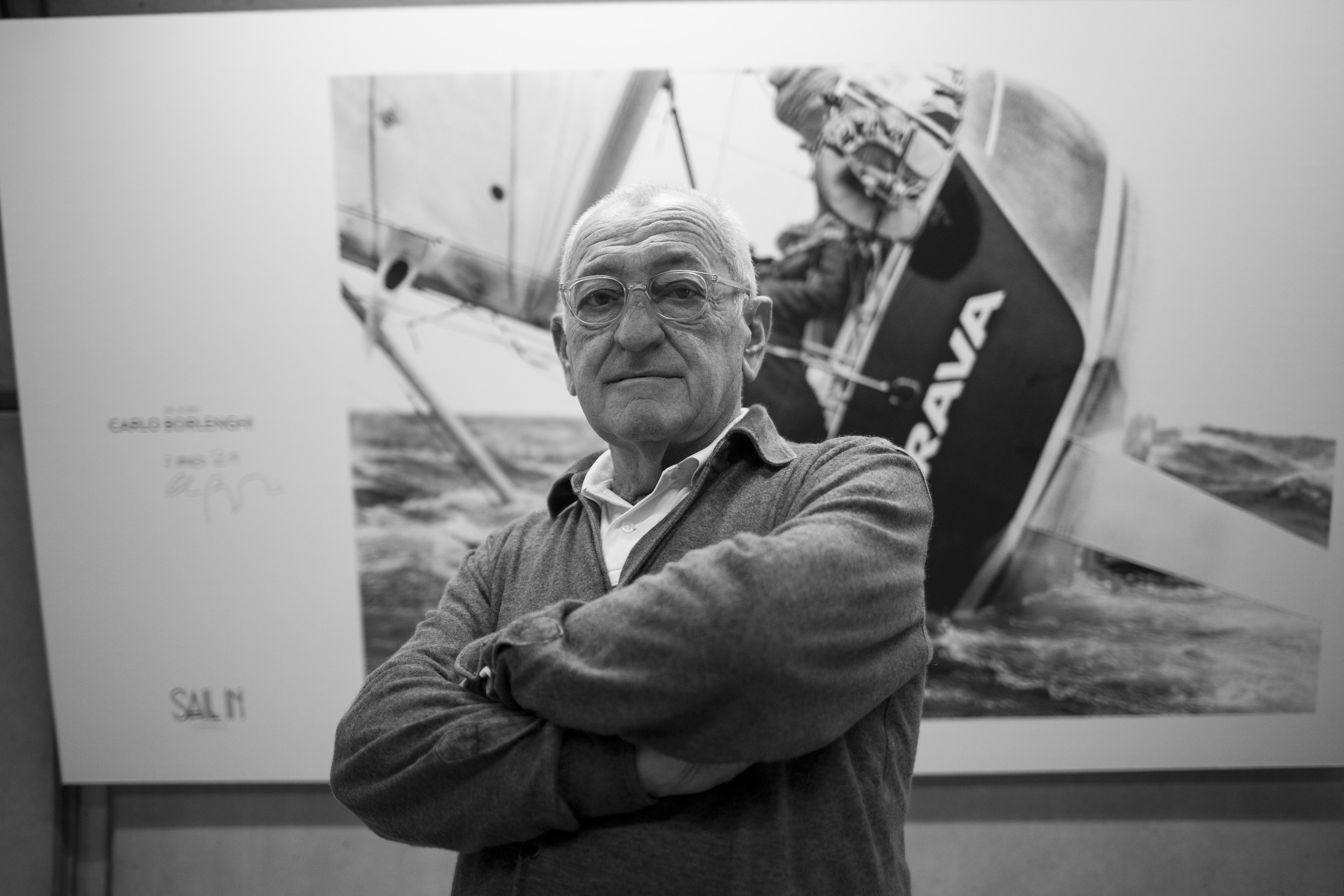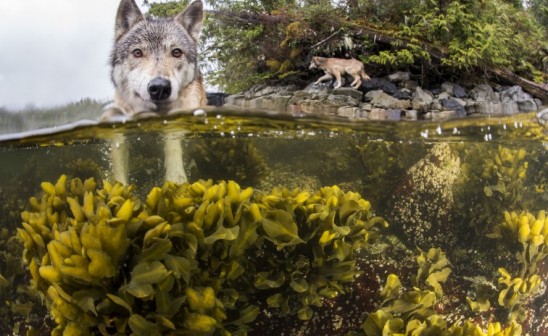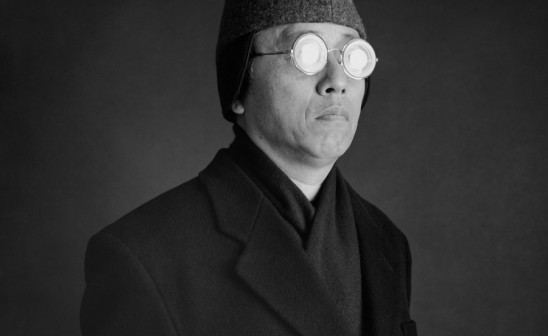The picture is there. Shooting outside is not like shooting in studio where you can just put the light on or move the model as you like. You have to play with nature, with the sea, with the ocean.
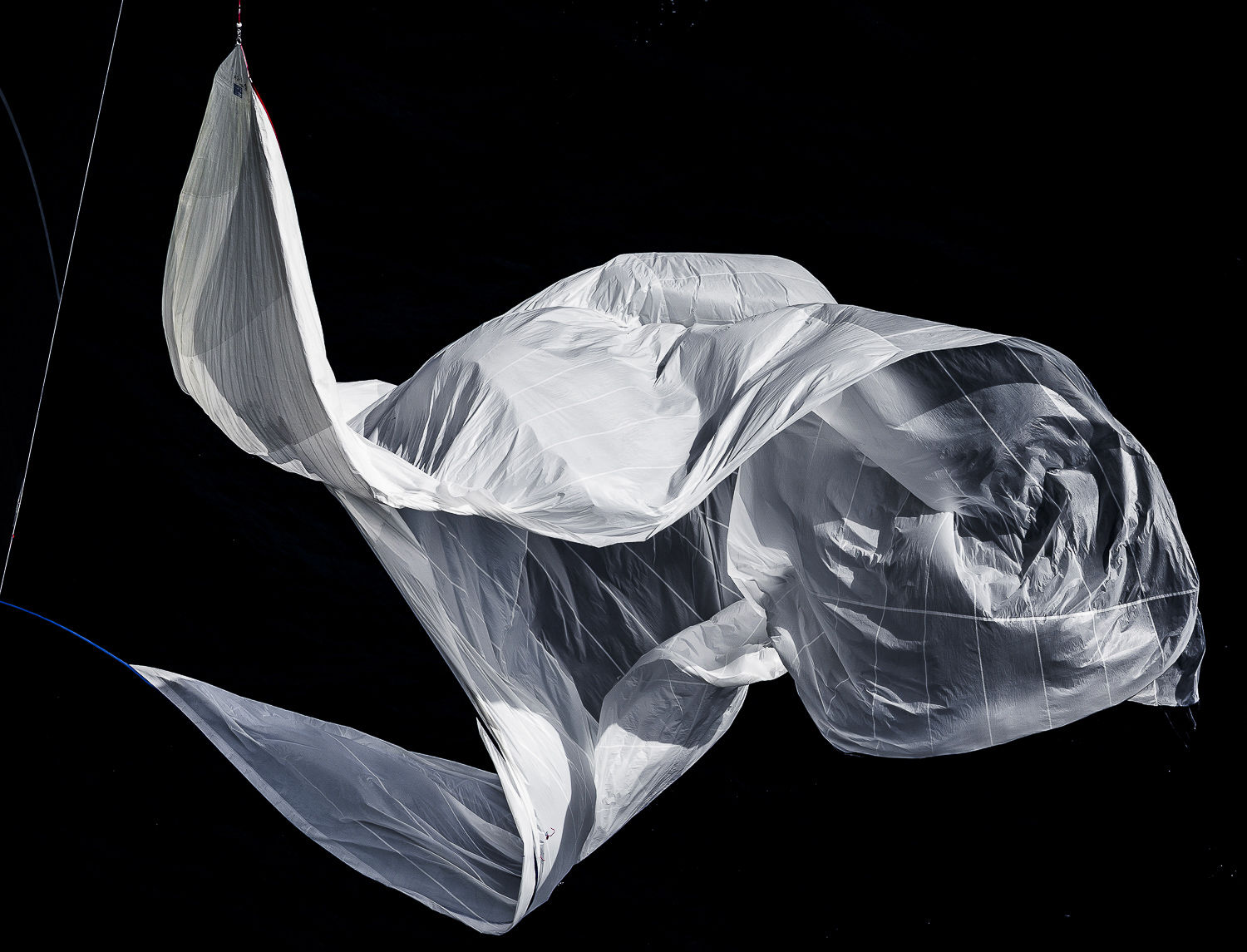
Meeting place for a long list of sailors and sailing amateurs, the 6th edition of the SAIL IN festival took place in Bilbao earlier last month. The occasion for Panthalassa to meet sailing legend Carlo Borlenghi. Building a bridge between sailing and people, Carlo Borlenghi creates a powerful connection with the sea through his lens only. "I’m not a sailor, not a swimmer but I like to shoot everything about the sea." Growing up in Lake Como, Italy, Carlo Borlenghi is considered a pioneer in sailing photography today. « My main house is still situated in Lake Como, I feel lucky living near the border where I have a private beach with a small boat. That’s nice place. I also have a small flat in Milan."
Thanks to his long-time valuable experience and distinct knowledge, the Italian photographer shares with us some pieces of wisdom about the vital need for a photographer to learn to adapt. "I didn’t change my vision and concept too much, I just use the technology to create the shot that was impossible before. It’s good to know exactly how difficult it was before to appreciate how easy is today." Before going back to his native city by the sea, the 78-year-old world-renowned sailing photographer found time to talk to us about the evolution of sailing photography. "When we first used a drone, it was like putting up a tripod to the sky." From analog photography to digital, he evokes the end of an era for the magazine industry, the use of social medias in the communication process today and a balanced vision between pioneer skills and the need to use new digital technology to take better photos.
Carlo, let’s start by talking about your collaboration with the SAIL IN festival. When did it start?
They first contacted me 10 years ago. They wanted to meet me but I was pretty busy with America’s Cup at the time. I ended up sending a selection of pictures and they used one of them for the poster of the very first edition of the SAIL IN Festival. We kinda lost contact until this year when Javier Sobrino invited me to join them. I was available and free from work at the studio so here I am today in Bilbao.
How did you work on this selection of pictures?
These photos are a little bit what represent both me and my job. For example, the "Brava" shot with the upside down boat was taken during my very first regatta. Some other pictures represent some good moments of my job, like "The big cloud" taken in Australia. Whenever I go out, I try to get one shot, not just for business but for me. Priority is obviously given to the client but I try to come back home with one single good shot. If I eventually have 4 or 5 different good ones, I’m happy. It’s hard to find good angles. When I go to bed, I think and dream of an angle. It’s easier to shoot when you have a picture in mind. You go out and just wait for the best moment and create the shot you have in mind. The picture is there. Shooting outside is not like shooting in studio where you can just put the light on or move the model as you like. You have to play with nature, with the sea, with the ocean. You never know, it can be flat, it can be huge and full of waves. I’m only scared to miss a picture for technical reason or regarding the focus. I want to stand out among other photographers, making different pictures.

Your shots are not only about people sailing, but there’s some real tragedy in there. Are you looking for stories?
Yes, story first. Now that the magazine industry is done, there’s no room for story. Magazines used to give us like 8 pages to play around one story, but now is different. The approach is different depending on the client and depending on the regatta, but 90% of the time today, I look for the single shot. A good and strong one. Nobody cares about the story on the regatta anymore. For an event like America’s Cup when we can eventually create a book, in this case, yes I look for the story. Otherwise, it’s hard to look for a story by yourself, in the sea, everything is expensive. You need to charter the boat, the helicopter and go to remote places. It costs a lot to reach nice places. For example, I’m planning to go to Australia today to cover the migration of the crabs to one special island, but it’s so expensive to go there and there’re only two flights each week.
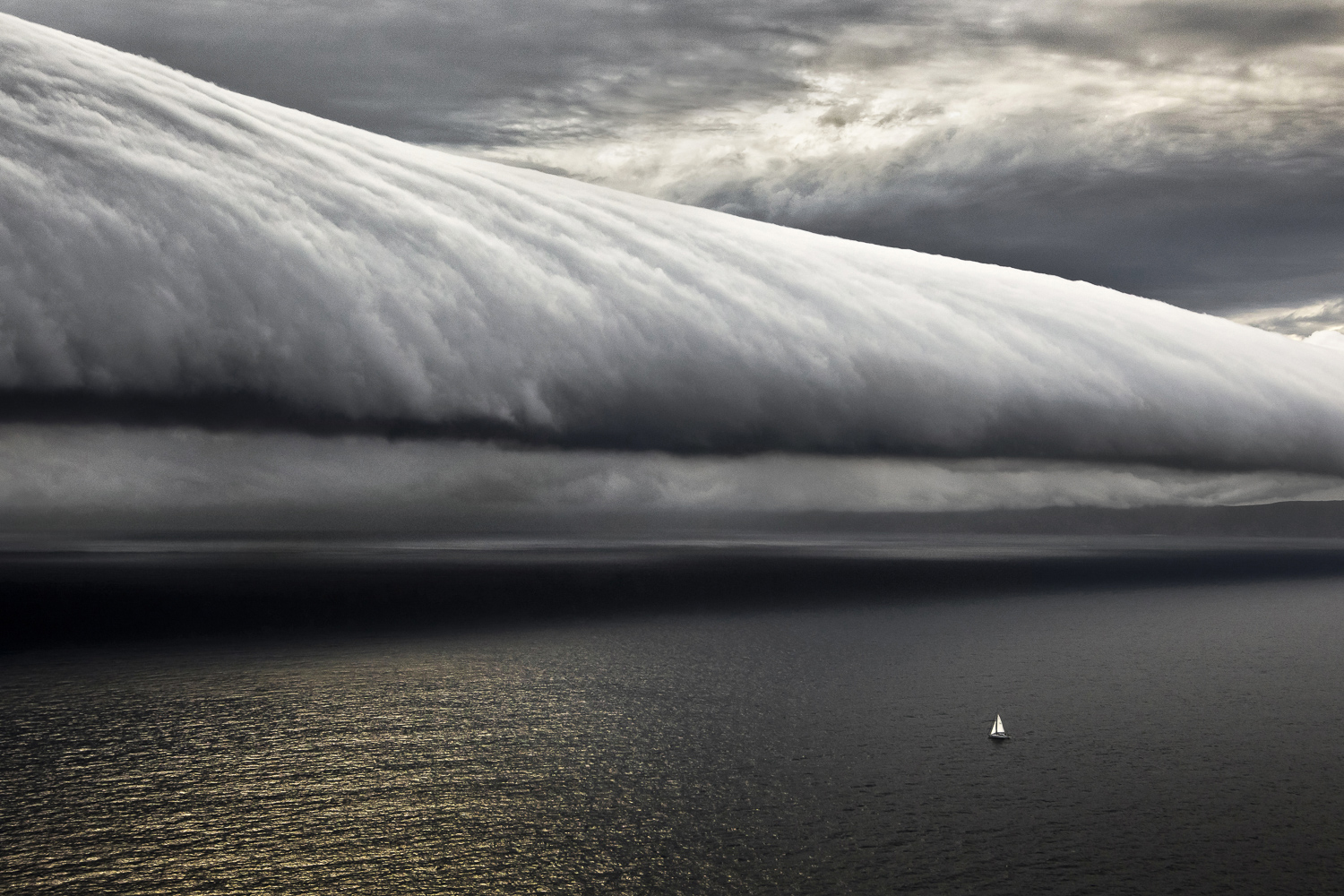
Why considering to cover the crabs migration and move out of the sailing field?
Because it’s incredible! The crabs go out from the forest and go to the sea, crossing the village. crawling down the cliff. So the island, the village, the streets and the cliffs suddenly become totally red, moving. It feels alive. I try to do some different and unusual photography. This crab thing could become a series I could sell at Paris Photo or in Italy.
Tell us about the techniques you use…
Today, I’m working only with digital. Digital gives you more chances to do pictures that was impossible to do before. Drone is a good example. When we first started to use things like this, we put the drone up, it was like to get a tripod to the sky. Before you had to shoot from a helicopter, and then it was difficult to find a client that would pay the expenses. then you have to push film up to 2000 ISO to get rid of all the grainy… the quality was not very good. Now with the drone, you go up, you shoot with the long exposure, you put the ISO, you stay there and get the perfect picture.
Are you working in respect of the technological advances?
Yes because there are so many new ideas, new angles and new cameras! For example, we also like using the drone while shooting a boat going full speed. Today, you can follow it. It was impossible before, there was a limit. Today, you can use these new toys to get new angles and new pictures. I didn’t change my vision and concept too much, I just use the technology to create the shot that was impossible before. It’s good to know exactly how difficult it was before to appreciate how easy it’s today. In the past, when you did black & white and when you had a black sky, you had to make a mask at the lab, you had to do it manually, because there was no correct picture, there was no reality, you played with the dark or with the lighting in the face or this kind of things.
You mentioned working with black & white… Tell us more about that.
Yes, I like black and white a lot. The thing is that, when I started to do this job, I used the go around like a street photographer, I wanted to go into the heart of things, move from my country to another one and come back with different stories to tell. In the past, it was easy. I remember being in England to cover a regatta and ended up making a story about Stonehenge. I spent two or three days in Stonehenge in order to see the crazy people there. I shot only black & white, even for the sunsets and sunrises. This was my dream – use sailing as a mean to travel and create other stories. Then the sailing thing became bigger and bigger for me and there was no time left.

What are the few places you like the most for pictures?
One the best places is South Africa. Because in 300 km2, you get everything. You start from the forest with all the animals like lions and giraffes, then you go to Cape Town where you get to see whales and penguins. Then you can go to the desert of Namibia very close. In the center town, you also have some good wine and vineyards. It’s a really nice place. I have never been in a cage but you can go out to see the sharks in the cage. South Africa is nice. I also love Australia, especially for the regatta. It is one of the best places in the world, especially during Sydney Open. For us as photographers, it’s very good for the action part. Sardinia is also good, you can get good pictures there. But sailing changed recently. Now, they don’t do long-distance races anymore. For me, they used to be the best ones, because I could use the light in the night, capture sunrise and this kind of light. Now they start at 12 o’ clock and are back on the dock at 3pm.
Over the years, you became one of the most famous sailing photographer indeed. What’s your relationship with the sea?
I’m not sailor nor a swimmer. The first regatta I made was a nightmare for me I had no idea what was going on. I started to do the regatta at the Lake with a friend who owned a boat. I observed those sailors going different ways and didn’t understand anything. Then later I realized it’s a very intelligent sport, I like the strategy it needs. In one way, I think it’s better for me not being a sailor because I don’t look at the technical things. I’m just out to shoot the aesthetic aspects. My mind is free mind. I realized it quickly. People who go to the photo fair are not sailors. So I’m bridging two worlds.
What do you like shooting the most?
I like to shoot everything about the sea. For many years, I used to cover a windsurf regatta in Maui, Hawaii. At the time, Robby Naish or this kind of surfers were there. You could sell the picture of a surfer at the time, now you cannot. Nobody care about surfing anymore. There is just maybe the big wave in Nazaré, Portugal, if ever you’re lucky to be there in this period. This is the problem. You could go to Maui for yourself and make very good pictures but it doesn’t pay the bills. Now, you have to work for sponsors to survive.
The job of sailing photographer evolved. Would you say your job relies more on sponsors than on print publications today?
Totally. Magazines don’t commission you anymore. The only way to collaborate with magazines is showing behind the scenes shots of the regatta. But you definitely have to work for sponsors to survive. For example, I work for Rolex. As a freelance photographer, it’s quite impossible because you need to chart the helicopter. For a 27-hour helicopter tour, it costs approximately 45K AUS$. Impossible for one single freelance to pay. The good compromise is to do the best you can for the sponsor because the priority remains the client. Then if you have the chance to get some free minutes for you, you can do one picture for you.

What about analog photography?
Nobody want analog photography anymore, especially for commercial projects. Clients want the picture for… yesterday! Today, you need to shoot and sent the shot right away. Everybody became crazy about the bloody Instagram and social things. Social medias go way more faster than magazine. People post pictures quickly because using an iPhone helps you shoot quickly and post it straight away.
As a photographer, do you feel you needed to adapt to this new era of social medias and all-things digital?
It’s just another challenge. I have my Instagram account but I use it for myself. However, sometimes it’s too much. There’re so many posts and so many stories that don’t say anything. They’re just here to fill the space. To me, if there’s no good picture, there’s no reason to post it. But for most people, it you didn’t pos anything, you didn’t exist that day. If you post a rubbish, it remains rubbish. I know I may be wrong because there’s some rubbish that work, but I stay with my concept. I don’t want to publish just for the sake of publishing. I’m not in the rush. When working on regattas, I have two assistants. They often want to publish a picture quickly but I say « wait, wait… » We get our name under the picture and nobody cares, nobody knows there was no wind this day, nobody cares if there was rain, or… forget it. Give space for the other ones. If there are good conditions the day after, we’ll publish a picture. Our picture must be different than the others’.
Do you also make videos?
Just taking photos. I'm not trying to do both but I work with a guy at the studio who's in charge of the video part. We sometimes do our post-production ourselves as well cause I find digital a bit flat. There’s no depth. During a race, we just work on the contrasts of the pictures and equalize the horizon. In the big sea, it’s not easy to get the balance. Then if we have five or ten good pictures , we can play a little bit more after the regatta. When it comes to printing a sailing picture in limited edition, we look more at the details in order to make it a little bit more accurate. But we don’t change the subject, we just clean up the color a bit. Normally, we just spend one minute for each picture. Otherwise, you’ll not survive.
We, at Panthalassa, are working around projects that take care about the ocean, around themes like sustainability, overfishing, plastic pollution like with the Plastic Family displayed here at the Festival. You spend a lot of time in the ocean, on boats, did you witness any changes?
Of course, you see some environmental differences. Dirty things are happening. There are a lot of dirty deals in the water, and when you are in the helicopter you can see big ships throwing all kinds of things in the water. They clear out the tank in the open sea. When you do the long distance races, you can witness this kind of things. The only thing I can do is publishing pictures about those things to show the problem but I’m just a tiny guy and it doesn’t work. They do what they want, and it’s a shame. The short film entitled « Albatross » has been one of the first pieces of art able to touch these issues in a beautiful and powerful way. When I see these kind of things, I do want to make a movie. Because it was a really good story. The more I talk to people about pollution, the more I realize people care more than 10 years ago. We destroyed so many things in the past and nobody cared. Now the moment comes to talk about plastic. But for me, cleaning up the beach from the plastic bags is just for aesthetic purposes. You have to civilize and educate people to avoid putting plastic on the beach. If you watch “Albatross”, you realize there’s plastic everywhere, even in the birds. It's part of the ocean. We eat plastic every day. This is the huge problem. And you cannot solve this problem with a “Save the Ocean!” slogan or by picking up the plastic trash from the beach. We need to educate people again and then the rest will come. Maybe slowly, but it’ll come.



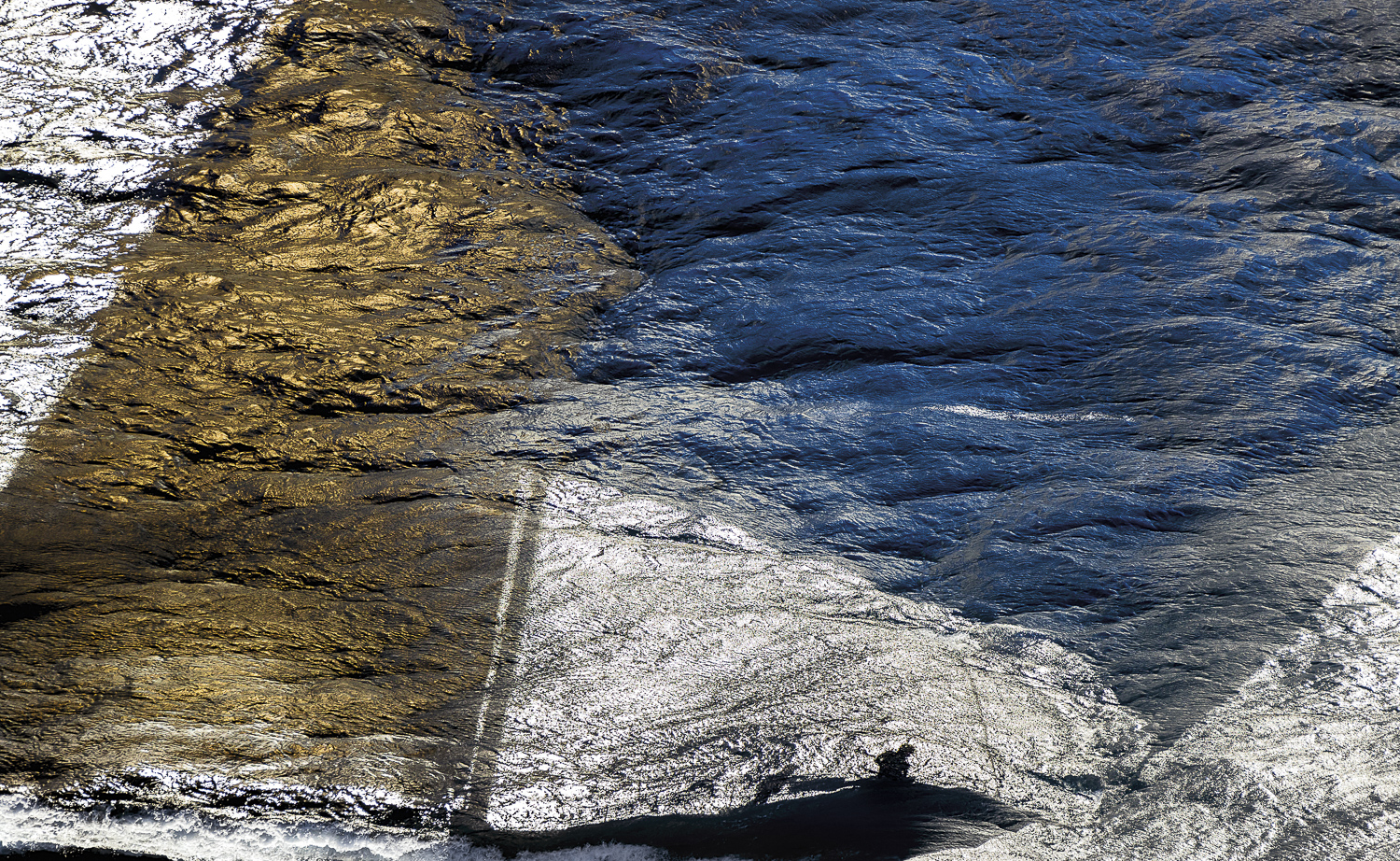
Follow Carlo Borlenghi's work on his website.
Sailing Photos: Carlo Borlenghi
Portrait Photo: Xabier Aldazabal / SAIN IN Festival


